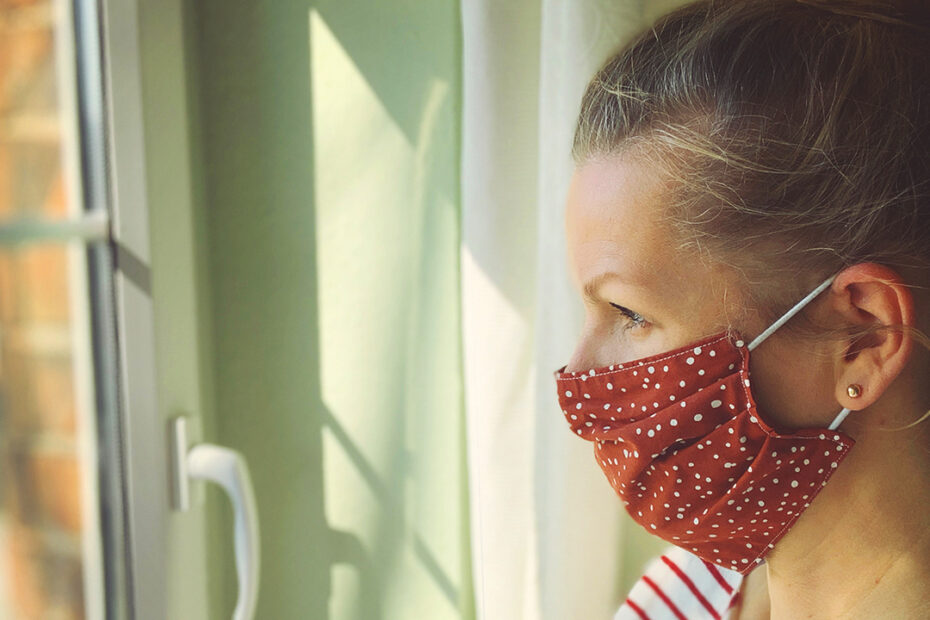The CDC, many other experts, and many governments are recommending that the general population wear masks when in public. I wanted to clarify why, and a bit about what these masks can do, and cannot do.
First, the bad news: wearing mask in public is not going to prevent you from getting COVID-19, even if you wear an N95 type mask. (Don’t buy N95 masks, leave those for our medical professionals and first responders.)
As the CDC says, “A cloth face covering is not intended to protect the wearer, but may prevent the spread of virus from the wearer to others. This would be especially important in the event that someone is infected but does not have symptoms.” So, like social distancing, this is one more way for you to help others.

Here’s how it works…
The general population is requested to wear masks because they will slow the bulk of your airflow. What’s going on here is that normally, your exhale carries many feet, much further if you cough or sneeze. In that breath you’ll find water droplets and particles including, potentially, viruses, dust, bacteria, pollen, etc. As a rule of thumb, if you’re 6ft away from someone, and they breathe at you, most of the heavier stuff (like droplets) will lose momentum and fall to the ground before they get to you. If they cough, you’re getting a blast of junk. See the guy on the left in this illustrative video:
So what happens if you block that big exhale? Like, say, with a cloth mask? Well, your entire volume of air is slowed down by the mask, which means that about anything in the air is also slowed down, so it doesn’t travel as far before falling to the ground. See the guy on the right. Even small particles of virus that can and do pass through the holes in the cloth will be significantly slowed down in the process. This is why you were taught to cough or sneeze into your elbow – your arm “catches” much of your exhale, and slows down the rest. It doesn’t block or filter particles (well, some stick to your sleeve and live there for a while if they are alive), mostly it just slows them down by a huge amount, so they don’t get mixed into the air of other people nearly as much.
A cloth mask is like permanently attaching your face to your inner elbow. It achieves that benefit. It will not protect you from getting COVID-19, and it won’t make your face perfectly non-transmitting. But it will take what was a shotgun and turn it into a dribble, and that’s something, especially if magnified by the whole population. UCLA emergency room physician Dr. Mark Morocco says, “we think maybe 25% of people actively expelling COVID are totally asymptomatic — they don’t even know they are sick. If you are one of these, this might save your family from getting it.” So, for the purposes recommended by the CDC and many local governments, virtually any mask will do. In fact, comfort is more important than filtering, because if you don’t wear it (hard to breathe through, uncomfortable, etc) it’s useless. For that matter, fashion is also a factor. If you are excited to wear your fun mask in public, you’re more likely to do so consistently. This is as much a behavior issue as a medical/physics one. That’s why we decided to make our cloth masks fun.
Wearing masks can have several psychological and behavioral benefits as well:
- It reminds you not to touch your face
- If you do touch your face, the mask keeps your hands from actually touching your nose and mouth. Arguably this enhances the value of frequent hand-washing, by preventing some of your re-infection episodes
- It reminds you to take the situation seriously – if you have to put on a mask, do you really need to go out there today?
- It sends a bonding cultural message – if you look around and see everyone wearing a mask, you know we’re all in this together.
Dr. Morocco notes, “Covid gets into you through your nose, mouth and eyes — so a mask (and glasses) keep you from touching the places that are ‘doorways’ for the virus. You might touch a surface that someone has coughed on 3 hours ago. Now the virus is on your hands, your nose itches…and the mask keeps that virus from walking through the door,” by keeping you from touching your nose or mouth.
One team did some experiments that are testing not just particle filtering but also breathability.

But, as discussed above, particle filtering isn’t really the goal here, it’s airflow speed reduction (and with that air, the particles in it). Based on this article and similar tests we researched, we decided that 100% cotton jersey fabric was one of the best choices for the desired result.
Lots of folks are sharing info about which fabrics block or filter the highest % of particles, arguing about which ones may or may not filter particles as small as COVID-19, etc. But most of this is moot for the general population. Even N95 masks won’t help you if you don’t wear them properly (perfect fit, never touch them, discard once potentially infected, etc):
https://www.cdc.gov/niosh/npptl/images/100years/UnderstandDifference3.jpg
Plus, we strongly encourage you not to buy N95 masks, as there is a shortage of them, and we need to save them for our medical professionals.
Instead, get something comfortable, fun, personal. Get a mask you will enjoy wearing, and wear it consistently to help prevent infecting others. Get a washable mask, and actually wash it regularly. Just know that these masks are not designed to protect you, and offer no specific guaranteed protection against any particular particle or other item. We’re just following the CDC and other researchers’ guidelines the best we can. Let’s stay healthy!


